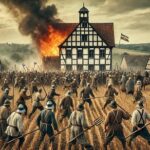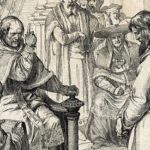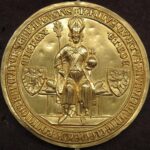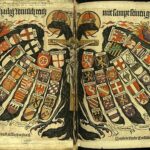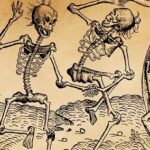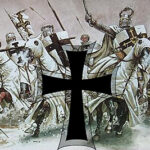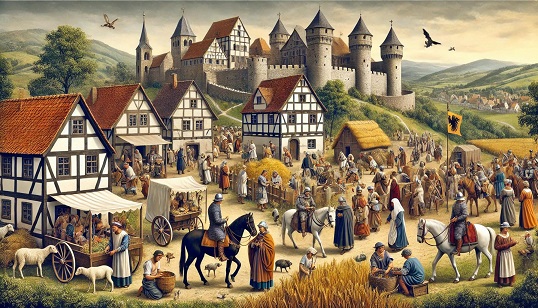
Castles on hills, armored knights on horseback, and peasants toiling in the fields—this is the familiar image of medieval life. But behind these visuals was a powerful and deeply structured system that defined medieval Germany: feudalism.
Feudal society in medieval Germany wasn’t just about who owned land. It was about relationships—between kings and nobles, lords and vassals, peasants and the Church. It was a society built on loyalty, obligation, and hierarchy. Understanding how this system worked helps us see how medieval Germans lived, worked, fought, and worshipped—and how power was shared and controlled.
Let’s step into the social fabric of feudal Germany and explore what life looked like from castle to cottage.
What Is Feudalism?
At its core, feudalism was a system of land-based relationships that structured medieval society.
- The king or emperor owned all the land in theory.
- He granted portions of it to powerful nobles (lords) in exchange for loyalty and military service.
- These lords could then grant land to vassals (often knights), who served them in return.
- At the bottom were the peasants and serfs, who worked the land in exchange for protection.
In Germany, this system developed under the Ottonian and Salian dynasties and became increasingly formalized in the High Middle Ages (c. 1000–1300).
The Feudal Hierarchy in Medieval Germany
Let’s break down the main social classes:
1. The King (or Emperor)
In theory, the Holy Roman Emperor stood at the top. But in reality, his control varied by region. He depended on powerful dukes, bishops, and electors to enforce imperial authority.
2. Nobles and Dukes
High-ranking nobles held large territories and significant power. In Germany, key duchies like Saxony, Bavaria, and Swabia were semi-independent.
These nobles:
- Collected taxes and rents
- Administered justice
- Raised armies for the emperor (or against him!)
3. Knights and Vassals
Lesser nobles served as vassals to lords. In return for a fief (land grant), they pledged military service, counsel, and loyalty. Many were knights—professional warriors who trained from boyhood.
Knighthood wasn’t just about combat. It also came with a code of chivalry, including loyalty, honor, and protection of the weak.
4. Peasants and Serfs
At the base of the pyramid were the peasants. They made up over 90% of the population and did most of the farming.
- Free peasants could own or rent land.
- Serfs were bound to the land and could not leave without permission.
They paid rents in crops or labor and were expected to serve their lord—but in return, they received protection from raiders and famine.
The Role of the Church
The Catholic Church was a major landowner and power broker in medieval Germany. Monasteries, abbeys, and bishoprics held enormous tracts of land.
- Bishops and abbots often acted like feudal lords.
- The emperor appointed bishops in many cases (until the Investiture Controversy).
- Church tithes (10% of a peasant’s income or harvest) supported religious institutions.
Priests and monks provided not only spiritual guidance but also education, recordkeeping, and healthcare.
Daily Life in Feudal Germany
Life was hard, but not always bleak. The rhythm of daily life was tied to the seasons, the Church calendar, and the local lord’s needs.
- Peasants planted, harvested, and tended livestock. Most never traveled more than a few miles from their homes.
- Lords and ladies managed estates, hosted feasts, and settled disputes.
- Knights trained in martial skills and participated in tournaments and warfare.
Holidays, religious festivals, and markets provided community and celebration. Local churches were the centers of spiritual and social life.
Castles and Manors
The castle was more than a military fortress—it was the administrative heart of a lord’s domain.
- Housed the noble family and their retainers
- Stored supplies and arms
- Served as a refuge during attacks
The surrounding manor included villages, farmland, mills, and sometimes forests. It was the basic unit of feudal economy.
Rights and Obligations
Feudal relationships were built on mutual obligations:
- Lords owed protection and justice.
- Vassals owed service and loyalty.
- Peasants owed labor and rent.
These weren’t casual arrangements—they were formalized through oaths of fealty and ceremonies, often held on sacred relics or altars.
The Complexity of German Feudalism
German feudalism was especially complex:
- Multiple layers of vassalage meant some lords were both vassals and overlords.
- Loyalties were personal—not institutional—so feuds and rivalries were common.
- Emperors had to negotiate with dozens of independent princes, bishops, and city-states.
This web of relationships made central control difficult—but also kept the empire resilient and flexible.
Long-Term Effects
Feudalism shaped German life for centuries:
- It fostered regional diversity and local identity.
- It slowed the development of a strong centralized state (compared to France).
- It entrenched social hierarchies—but also preserved rural communities and traditions.
Many of Germany’s medieval castles, market towns, and family names trace their origins to the feudal period.
Medieval German feudal society was built on loyalty, land, and layered obligations. It created a decentralized but enduring framework for life, law, and leadership. From the fields of the Rhine to the towers of Bavaria, the echoes of this system still shape the cultural landscape of Germany today.
Explore more about the world around it in The Holy Roman Empire, Otto the Great and the Ottonian Dynasty, German Medieval Universities or discover its legacy in German Castles and Traditional German Holidays.
The Middle Ages in German History – An overview of the political, cultural, and religious transformations that shaped Germany from the fall of the Carolingian Empire to the dawn of the Reformation, including the rise of the Holy Roman Empire and medieval society.
Otto I and the Birth of the Holy Roman Empire – Explore how Otto I’s coronation in 962 marked the formal beginning of the Holy Roman Empire, establishing a powerful political and religious legacy in medieval Germany.
The Hanseatic League – Discover the rise of this powerful trade alliance of northern German cities that dominated commerce across the Baltic and North Seas during the late Middle Ages.
German Castles and Knightly Culture – Dive into the architectural and chivalric world of medieval Germany, where fortified castles and knightly ideals shaped warfare, literature, and noble identity.
The Investiture Controversy – A pivotal power struggle between church and state, this conflict reshaped the relationship between emperors and popes across the German medieval landscape.
The Black Death in Germany – Trace the devastating impact of the 14th-century plague on German towns and villages, altering demographics, labor systems, and religious life.
Peasant Revolts in the Middle Ages – Examine the causes and consequences of peasant uprisings in medieval Germany, including their role in challenging feudal oppression and economic hardship.
The Teutonic Knights and Eastern Expansion – Follow the military and missionary campaigns of the Teutonic Order as they expanded Germanic influence eastward into pagan territories.
German Medieval Universities – Explore the intellectual revival of the High Middle Ages, as cathedral schools and universities flourished in German cities, preserving classical knowledge and fostering new ideas.
The Golden Bull of 1356 – Understand the constitutional landmark that formalized the election of German kings, shaping imperial governance in the Holy Roman Empire for centuries.
